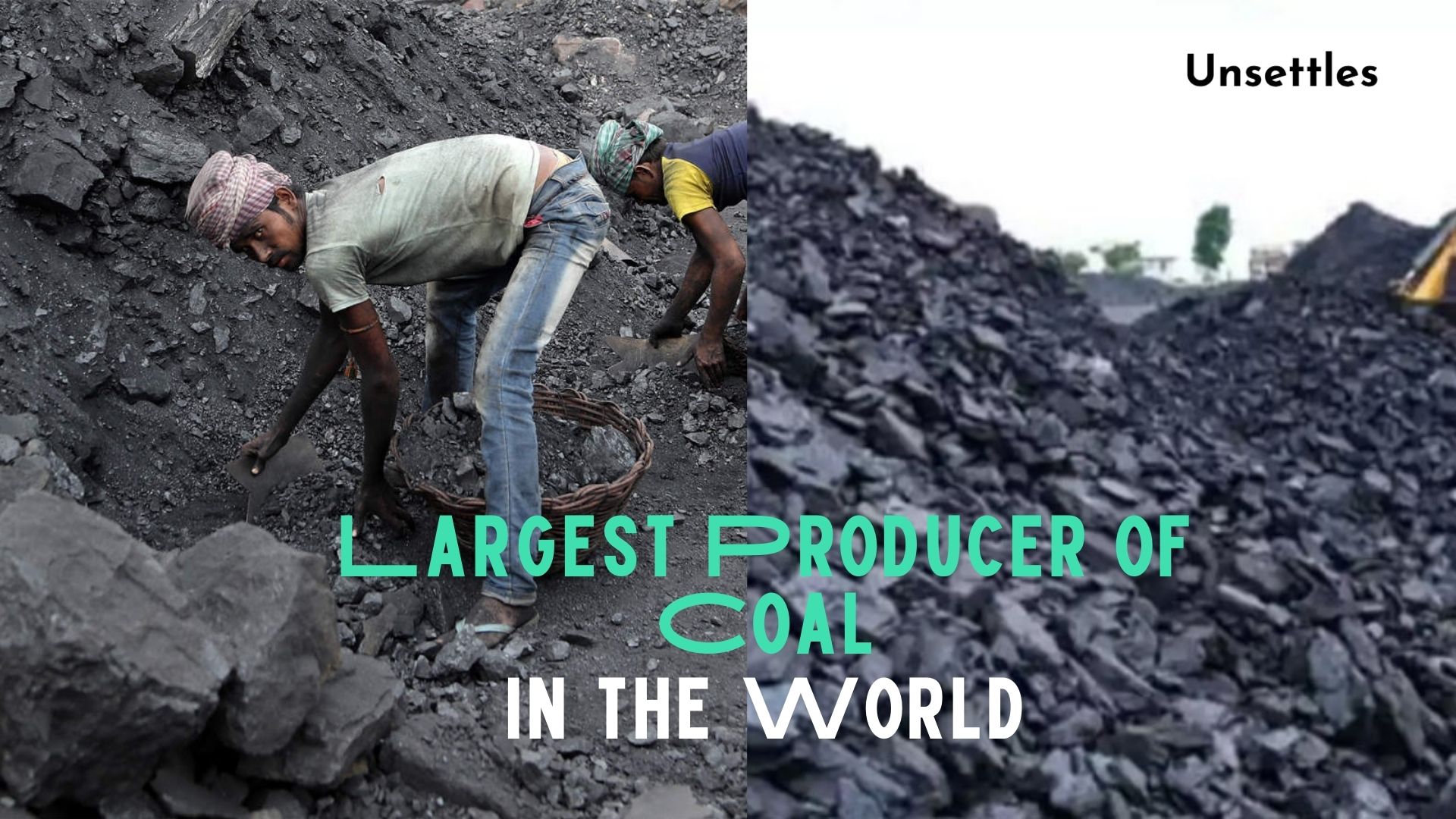Largest Producer of Coal in the World: Coal remains a cornerstone of the global energy industry, powering various sectors and serving as a key contributor to the world economy. Despite the growing emphasis on alternative energy sources, coal continues to play a dominant role in 2024. Here, we explore the top 10 countries that are leading in coal production, keeping up with the demands of energy consumption across the globe.
Top Coal-Producing Countries in the World
1. China – 3,708,155,408,000 Tonnes
China continues to top the charts in global coal production, contributing significantly to the energy needs of its vast industrial and urban landscapes. By 2024, China’s advanced mining techniques and massive coal reserves help the country maintain its leadership position, accounting for nearly 47% of global coal output. Although China has made bold commitments to carbon neutrality by 2060, coal remains a critical part of its energy strategy as the country works to balance its energy demands with environmental goals.
2. India – 761,662,038,400 Tonnes
India is the second-largest coal producer globally, heavily relying on coal to fuel its fast-growing economy. In 2024, India remains focused on meeting its domestic energy needs through its coal reserves, producing around 893 million tonnes annually. India’s coal production is largely driven by Coal India, the largest coal mining company in the world, responsible for 80% of the country’s production. Despite government efforts to diversify energy sources, coal continues to play a pivotal role in India’s power sector.
3. United States – 728,364,498,000 Tonnes
Although coal production in the United States has declined in recent years due to the increasing adoption of cleaner energy sources, the U.S. remains a key player in the global coal industry. By 2024, the U.S. holds its place as the third-largest producer, with 484.7 million metric tons mined in 2020. Despite a shift toward renewable energy, the coal sector still has a significant role, especially in areas where natural gas and renewables have not yet become dominant.
4. Australia – 554,763,962,900 Tonnes
Australia ranks fourth in global coal production, leveraging its vast reserves and advanced mining processes to meet domestic and international demands. As a leading coal exporter, Australia is a major supplier to Asian markets. In 2020, Australia produced 550 million tons of coal, maintaining its position as one of the top coal-exporting nations. The industry is vital to Australia’s economy, despite growing concerns about environmental impacts.
5. Indonesia – 502,653,360,000 Tonnes
Indonesia stands out as the fifth-largest coal producer, with much of its production geared toward export markets. By 2024, Indonesia competes closely with Australia for the top spot in coal exports. The country’s strategic location and rich coal reserves make it a significant player in the global coal trade, supplying energy to countries across Asia.
6. Russia – 423,095,348,300 Tonnes
Russia continues to strengthen its position as a major coal producer, ranking sixth globally. Despite fluctuations in global demand, Russia’s coal production remains robust, thanks to its vast reserves, particularly in the Siberian region. In 2024, Russia is expected to continue increasing its coal output, with plans to produce 670 million tons annually by 2035. This expansion reflects the country’s strategic focus on energy security and economic development.
7. South Africa – 277,951,564,100 Tonnes
Coal is critical to South Africa’s energy security, and the country ranks seventh in global production. South Africa produces 277 million tonnes of coal annually, much of which is exported to meet the growing energy demands of Asia and Europe. Despite efforts to transition to cleaner energy, coal remains a key resource for South Africa’s electricity generation and economic stability.
8. Germany – 193,593,193,800 Tonnes
Germany remains a prominent coal producer, despite its strong focus on renewable energy. By 2024, Germany has made significant strides in moving away from coal-fired power, yet lignite coal production continues to be an important part of the country’s energy mix. Germany is balancing its goals for renewable energy adoption with the need to maintain a reliable supply of electricity, making coal a necessary, albeit declining, component.
9. Poland – 143,996,028,700 Tonnes
Poland ranks ninth in coal production, relying heavily on this resource for its energy needs. Despite efforts to reduce coal dependency, Poland continues to produce significant quantities of coal, using it to generate 80% of its electricity. The government has set long-term goals to reduce this reliance by 2040, focusing on a transition to renewable and nuclear energy sources.
10. Kazakhstan – 113,619,500,900 Tonnes
Rounding out the top 10, Kazakhstan is steadily increasing its coal production to meet both domestic and export demands. Producing 113.2 million tons annually, Kazakhstan is an important player in the global energy market. With over 400 coal mines, the country’s coal industry is poised for continued growth, playing a key role in its economic development and energy security.
Conclusion:
Coal remains a fundamental part of the global energy landscape, despite the rise of alternative sources like solar and wind. These top 10 coal-producing countries continue to meet the world’s growing energy demands while also navigating the challenges of sustainability and environmental concerns. As the global push for cleaner energy progresses, the future of coal will likely evolve, but its importance in many countries’ energy strategies remains undeniable in 2024. Largest Producer of Coal in the World
